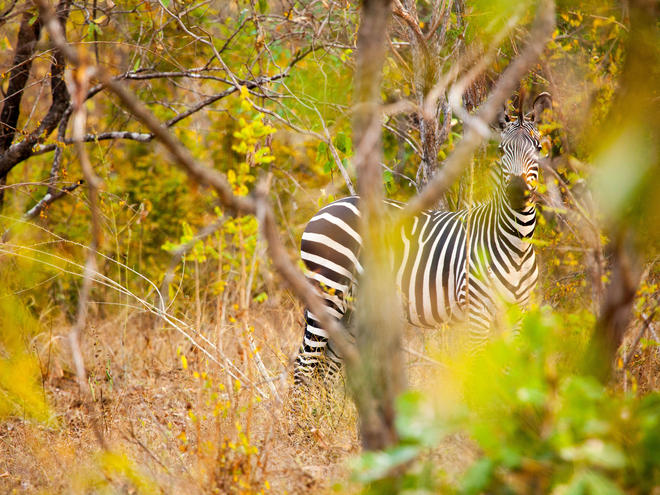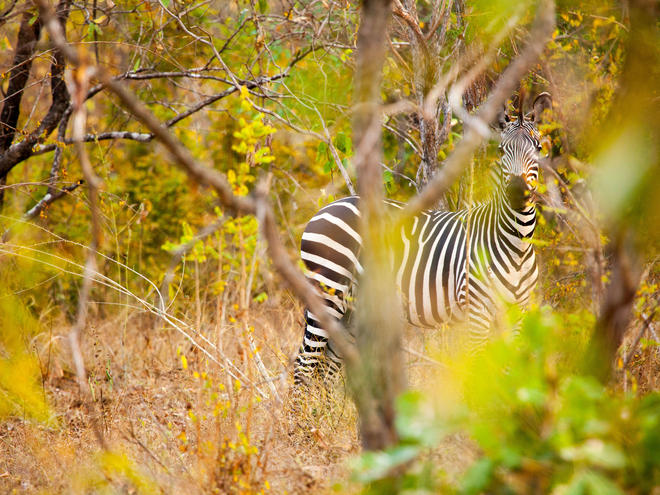Seven unsung ecosystems we need to survive
Published by the World Wildlife Fund

They may not be household names, like the Amazon rainforest or the Great Barrier Reef. But these forests, grasslands, savannas, and other ecosystems are just as vital to the health of our planet. They support an incredible range of plants and animals, as well as millions of people and their communities.
They also play a critical role in fighting climate change, helping regulate the Earth’s temperature and natural cycles by pulling harmful, heat-trapping CO2 out of the atmosphere. Explore some of the lesser-known ecosystems that do so much to keep our planet livable.
Cerrado savanna
When it comes to forests, the Amazon rainforest usually grabs the spotlight. But the nearby Cerrado, a wooded grassland covering more than 20% of Brazil, is equally important. It’s the world’s most biodiverse savanna, home to an astonishing 5% of the Earth’s plants and animals. Jaguars, giant anteaters, maned wolves, and armadillos live within this ecosystem, which also provides essential services to local communities and stores immense amounts of carbon in the ground.
In recent decades, agircultural expansion for beef and soy production has driven rapid deforestation across the region. As grasslands are plowed up, they release an estimated 250 million tons of greenhouse gases annually—the equivalent of burning 28 billion gallons of gasoline.
WWF partners with some of the world’s largest food companies, as well as local farmers, to halt deforestation in the Cerrado and to promote sustainable soy production.
Miombo woodlands
Elephants, rhinos, giraffes, zebras and other wildlife roam the Miombo woodlands, which cover much of central and southern Africa. This unique ecosystem, named for the area’s many “miombo” trees, is about twice the size of Alaska and is made up of tropical grasslands, savannas, and shrublands. Although the Miombo is still relatively intact and sparsely settled, these natural woodlands are increasingly threatened by development for agriculture, ranching, and charcoal production.
When trees are cleared and burned, carbon is released into the atmosphere and the land is less able to re-absorb greenhouse gases. WWF is working to conserve these important woodlands and help local communities use their natural resources more sustainably.
Amur-Heilong landscape
Straddling the border of China and Russia, the Amur-Heilong is one of the most biologically diverse temperate forests in the world. About the size of Texas, this mixed woodland-grassland landscape is home to the world’s most endangered large cat, the Amur leopard, as well as a population of endangered Amur tigers. In addition to harboring a remarkable variety of plant and animal species, the landscape includes the 380-million-acre watershed of the Amur River—the longest undammed river in the Eastern Hemisphere.
But this landscape now faces mounting pressures from deforestation and infrastructure development, which pose huge threats to local wildlife and their environment. Throughout the Amur-Heilong, WWF helps to protect species by connecting important wildlife corridors and safeguarding essential habitat against illegal logging and other destructive activities.
Greater Mekong region
Few places on earth are as biodiverse or ecologically important as the Greater Mekong region. Stretching from the Tibetan plateau to the shores of Vietnam, this spectacular ecosystem features an abundance of rare wildlife, mangrove forests that protect coastal communities, and the largest combined tiger habitat in the world. It also supports the world’s largest inland fishery, an essential source of food and income for the river basin’s 70 million people.
In the last 50 years, though, the Greater Mekong region has lost more than a third of its forests due to agricultural expansion and economic development. Fewer than 250 million acres of the region’s forest now remain, while tens of millions of additional acres are projected to disappear by 2030. The region’s fragile river systems are also severely threatened by infrastructure projects, such as dams for hydropower, which could devastate freshwater species and the communities that rely on rivers to live.
Along with governments and communities, we support the sustainable use of land and freshwater resources across the Greater Mekong while spearheading efforts to protect its rich biodiversity.
New Guinea’s forests
After the Amazon and Congo, the rainforests of New Guinea are the third-largest in the world. The island covers less than 1% of the planet’s land area but contains at least 5% of its species, many of which are only found there. These include kangaroos adapted to climb trees, giant pigeons, and more species of orchid than anywhere else on Earth. While much of New Guinea’s forests are still intact, the expanding production of crops like cocoa, coffee, and palm oil could drive the loss of 17 million acres of forest by 2030.
To prevent unsustainable agricultural practices and to combat illegal logging, WWF collaborates with indigenous peoples in New Guinea and helps companies achieve FSC certification, ensuring that forests are managed responsibly and that important habitats are conserved for future generations.
Forests of eastern Australia
Though Australia is mostly desert, the tropical and temperate forests, savannas, and shrublands along the country’s eastern coast are some of the most biologically diverse regions on Earth, with thousands of plant species and more than 150 species of mammals, amphibians, reptiles, and birds found nowhere else.
Unfortunately, the continent’s forests are now being cleared at a rapid pace for livestock and agriculture, making it one of the world’s most at-risk deforestation fronts. But that’s not just bad news for trees. When trees and other vegetation are removed, sediment, fertilizer, and pesticides run off into the nearby Great Barrier Reef, where they smother coral reefs and pollute fragile marine ecosystems. Land-clearing also drives climate change, leading to rising ocean temperatures and coral bleaching.
In Australia, WWF is working to increase native forest cover and protect threatened species by advocating for stronger laws against excessive land-clearing, in addition to championing grater protections for the Great Barrier Reef.
Northern Great Plains
Two hundred years ago, as many as 60 million bison roamed America’s plains—along with pronghorn, black-footed ferrets, swift foxes, and a vast array of birds. As pioneers moved west in the 19th and early 20th centuries, however, hundreds of millions of acres of the country’s natural grasslands were converted for cropland, infrastructure, and living space.
Today, this landscape continues to lose ground. In recent years, the Northern Great Plains have lost more natural habitat than the Brazilian Amazon, emitting greenhouse gases equivalent to more than 100 million cars on the road each year. To keep this fragile prairie ecoregion intact, WWF works hand-in-hand with ranchers, farmers, and tribal nations to encourage sustainable land management, restore native species, and to protect the region’s natural and cultural heritage.
Read the full article at: http://feedproxy.google.com/~r/WWFStories/~3/kgCxwLgxl20/seven-unsung-ecosystems-we-need-to-survive


